Little Easton, Essex (†Chelmsford) C.15
Passion Cycle
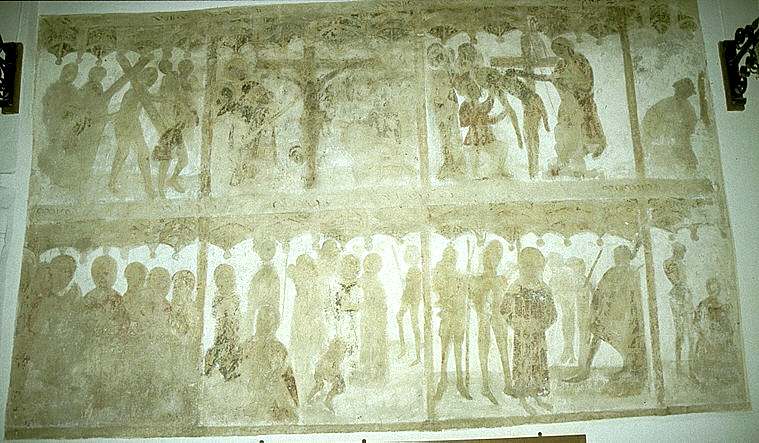
The arrangement of scenes in this Passion Cycle begins the story at the left of the lower of two horizontal tiers of compartmentalized scenes with what is almost certainly the Last Supper (detail, below left).
To the right of this is a scene combining the Agony in the Garden with the Betrayal (near left). Judas can be made out in the act of embracing Christ in the centre of this latter scene, with a soldier armed with a lance further to the right of them.
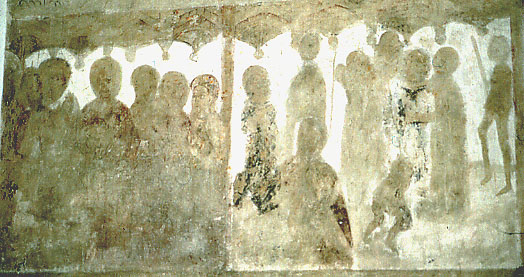
Beyond this, two scenes, shown below right here, complete the lower tier.
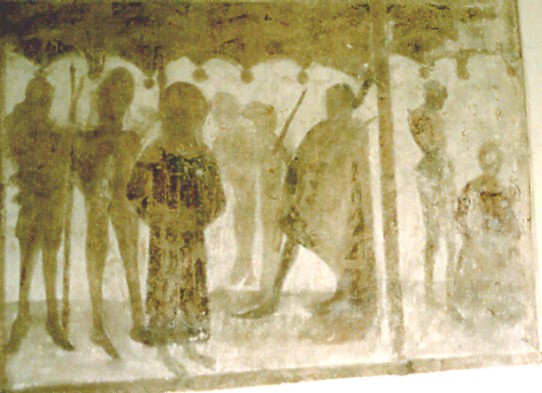
The first is probably Christ before Herod. Christ stands slightly off-centre, with armed soldiers to the left and behind. The figure at the extreme right of the scene sits in an authoritative posture, and may be the seated Pilate, but his falchion or scimitar-like sword, which is very faint on the wall now but clear in EW Tristram’s watercolour, identifies him as Herod, who boasts specifically about this weapon in the York Mystery Cycle.
Christ wears what is probably intended for the ‘gorgeous robe’ described in St Luke’s account of his appearance before Herod (Luke 23:11). Finally in this lower tier, a further scene, or perhaps part of one, remains at the extreme right. It seems to show one standing and one seated figure, but identification beyond that is impossible now – Tristram did not include it in his watercolour copies.
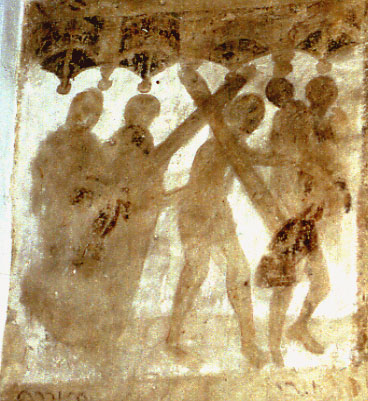
The narrative continues in the upper tier, starting on the left (shown left) with a fairly clear scene of the Road to Calvary. The second figure from the left, wearing a long robe is helping to carry the Cross, and this is most likely to be the Virgin, as painted in manuscripts by Continental artists. A soldier in a short robe leads Christ by a rope, while three other figures, two of them in the background, look on.
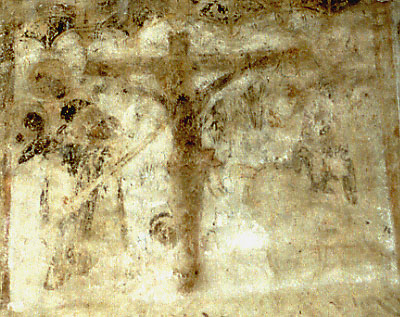
Shown to the right is the next scene, the Crucifixion, rather obscure now, but with Longinus and his lance showing fairly well. This is followed by the Deposition (below left), with Christ being taken down from the Cross by two people, with two others standing behind to the left.
The final scene to the right of the Deposition may be incomplete and is in any case impossible to identify with certainty. It seems to show a figure with a hat or helmet kneeling or crouching, and may be the Entombment.
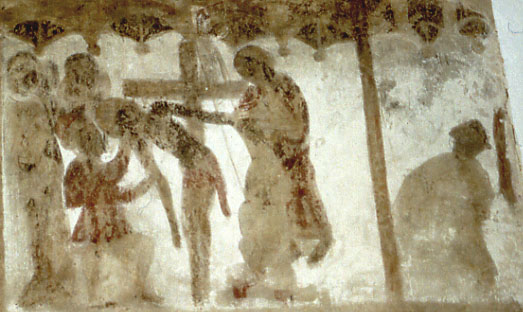
All the scenes are shown taking place under an elaborate canopy, painted to suggest a vaulted roof with ribs and bosses, such as that found in many English churches and cathedrals in the fifteenth century. These details are rather blurred in the wall paintings now, but they show well in the watercolour copies housed in a wooden frame on the wall below. These were made by Professor EW Tristram anything up to 70 years ago, when the paintings were in better condition. Details of the armour worn by the soldiers in Christ before Herod also show better in the watercolours. This seems to be complete plate armour at, or approaching, its greatest degree of elaboration, which in turn almost certainly means that the paintings were made during the latter part of the Wars of the Roses, probably during the decade 1460 to 1470.
There are no other late medieval paintings at Little Easton, but alone on the north wall opposite, is a very fine twelfth-century painting of a Prophet or Apostle, now on the site.